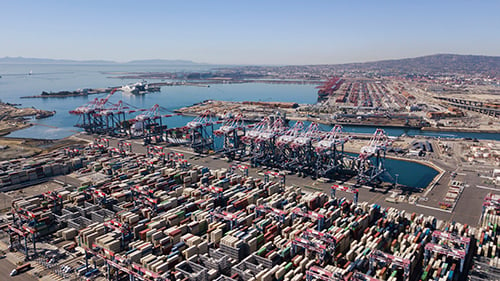
Planning to import goods from Asia by ocean and sell them in America this summer? Better act fast. The trans-Pacific cargo move can now take over three months. According to multiple sources, average transit times have risen to double pre-COVID levels — and they’re still increasing.
Methodologies and data sources differ, so time estimates vary. But each dataset shows the same trend: With every passing month, more vessels, container equipment and goods inventories are getting waylaid in the Pacific.
Flexport
Flexport launched its weekly Ocean Timeliness Indicator (OTI) in early December. The OTI uses data from Flexport’s freight forwarding customers back to March 2019, measuring the time from the cargo-ready date at the exporters’ gate to the date when products leave the destination port (i.e., the landside transport time from the factory to the port in Asia, the Asian port wait, the ocean journey, and the North American port wait). The OTI is an average for loads from all Asian countries to all North American ports on any of the three coasts.
Flexport’s Asia-U.S. OTI reached an all-time high of 114 days last week. That’s 41 days or 57% higher than at the same time last year, and 63 days or 125% higher than at the same time in 2020, pre-COVID.


